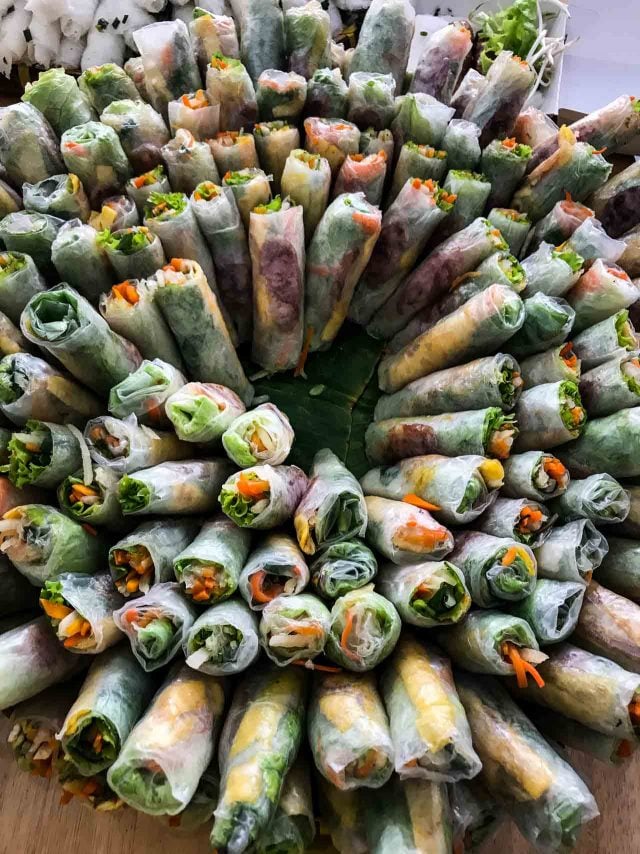
Hitting the road again, or the skies I should say (although we did one bus ride during our trip – more about that later…), we touched down in Da Nang, specifically to visit The Museum of Cham Sculpture, a museum that is not to be missed if you’re in Vietnam.
I forgot all my deities since I stopped doing yoga (such as Ganesha and Shiva, and how one guy got that elephant head, and why Shiva is wearing that snake around their neck – and smiling about it), so it’s good to do a little reading about them before you go to help you understand more about the artifacts in this museum. We took an 8am flight out of Ho Chi Minh airport, landing about an hour later, and taking a taxi right from the airport to the museum, which is only 3km away (I’ve given some tips at the end of the post about using taxis in Vietnam, that are worth noting), so it was easy to get there and spend the morning looking at the remarkable sculptures and friezes, many dating back to the 4th century.
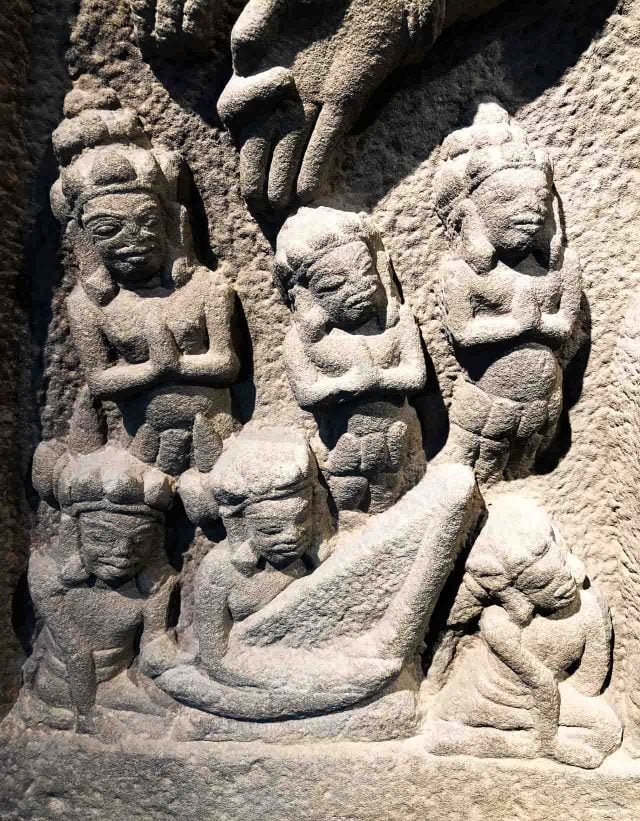
I have the lowest museum attention span in the world, and two hours in this museum was just the right about of time to take it all in. Then I grabbed a Grab to take us to Hoi An, where we spent the next two nights. The old town of Hoi An is a UNESCO World Heritage Site and its traditional architecture is well-preserved, although not overly so. It still has a bit of funk, in spite of quite a few tourists (including us) roaming the streets.
Someone told me Hoi An is the most touristed town in Vietnam and it’d be hard to disagree. At night, the historic old town is jumping with people strolling by, and shops selling stuff, as well as locals offering everything from boat rides and fruit, to silk scarves (the town is known for its silk) and leather sandals. People also come to Hoi An to have suits and clothing made for them, and you’ll find several streets lined with custom tailor shops. Someone told me that if you bring a picture of what you like; a suit, a dress, or a shirt, they’ll make it for you, and have it ready in a day or two. I grew up wearing ties and jackets to school every day, so it takes a pretty compelling reason (or event) to get me into a suit, so I passed, but could have used a few more linen shirts since the ones I brought were splattered with Pho and dragon fruit stains.
Outside of the old town, we found more interesting things than in the old town, like the jumble of housewares being sold on a sidewalk, below, and spa treatments at White Rose Spa. We learned back in Ho Chi Minh City that massages and facials are very inexpensive in Vietnam, and mostly very good, so we’d indulged with our friends there, and now, here. (Note that it’s customary to tip if you had a good treatment.)


In Hoi An, we had a very good meal at Vy’s Market (the lime leaf chicken skewers were particularly good, as was the tofu skin salad), which someone online wrote was “sanitized” street food. It may have been, but we liked it all the same. Very fresh ingredients, nice servers, and tasty. Cao Lau Bale Well (45/3 Train Hung Dao) was recommended by several people (not locals) and while we found the place interesting, the Cao Lau noodles weren’t all that compelling. It was, however, charming, located off a side street in what was probably part of their home. They were also really nice, which made it…fine.
Another meal was at Nu. A sweet little place where the steamed pork buns were good, as was the chili ice cream we had for dessert. You won’t be the only English-speaking people dining there, but we liked it. There’s also a night market with an indoor eating area for street food, which I’d check out if I went back. If you want a taste of Egg Coffee, I had one at Passion Fruit coffee that even my skeptical partner liked. (I tried to compare it to sabayon, but he wasn’t having any of that.)
We stayed at the Vinh Hung Riverside hotel located on the river, not far from the old town, but far enough away so you were a decent distance from the fray. The staff was unfailingly polite and helpful and we had a nice room on the river, although I’d recommend perhaps staying in a room that’s not on the ground floor. I didn’t want to sleep with the door open so we shut everything and turned on the AC. The button on the machine was so bright that it was like a spotlight over us, in the room, which made it a bit difficult to sleep. It wasn’t really hot enough to warrant the AC, but we used it instead of keeping the door open. (Unfortunately, the unit was high on the wall and there wasn’t anything to block the light with, but I just discovered these, and am thinking of traveling with them because so many hotels have appliances and switches with really bright lights. Can people really sleep with all those lights flickering and glowing?) But we liked the hotel, which had a nice pool, and the breakfast offered a variety of Vietnamese foods and fruits. I gorged on rambutans, mangoes, and passion fruits.
We then took the 2-hour bus to Hue, which ended up taking a little more than 4 1/2 hours. The bus had funny, sort-of lie back seats, which looked appealing when I first saw them, but anyone taller than 5 feet (or who has never done yoga) might feel a bit squished after a while. (Another spoiler: You couldn’t sit upright in the seat, even if you wanted to.) While the bus had pillows, which Romain and some others grabbed for propping themselves up, the driver bellowed at anyone who took one, so they sheepishly put them back. I was okay lying halfway down for an afternoon, although some people were going all the way to Hanoi, and I’m sure they will need a few massage treatments to uncoil them once they arrive.
I hate to post the obligatory “I’m in paradise” shot, especially when so many of you (or us, which now includes me) are back in the cold. But this was a pretty beautiful spot in Hue.

It was our hotel, the Pilgrimage Village. It was located a little out-of-town, but the hotel had a shuttle and cabs were inexpensive (about $3 -4) to take you anywhere you wanted to go. So it wasn’t a problem going back and forth.
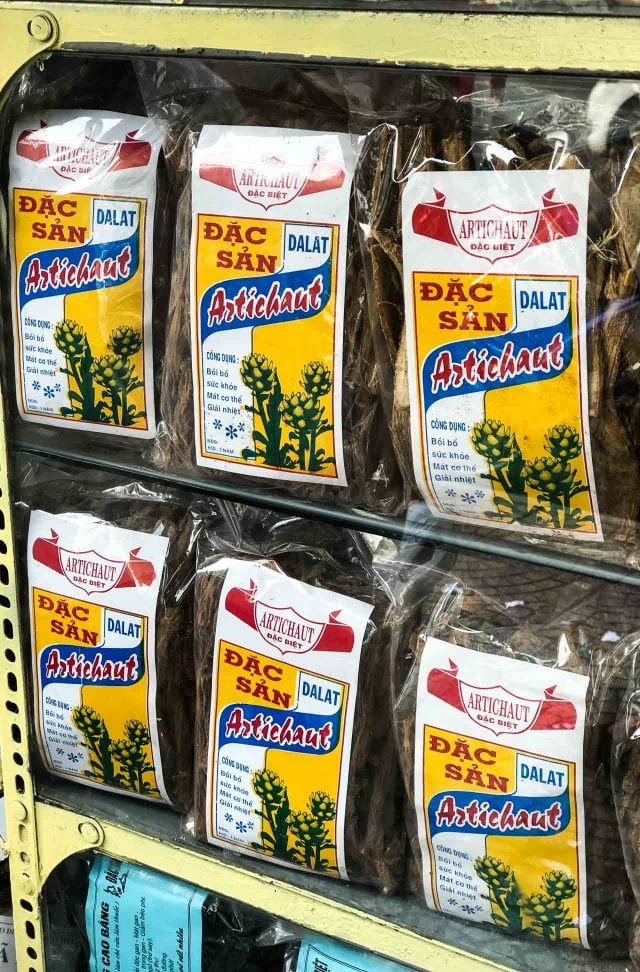
I was especially interested in going to the Dong Ba market in Hue. There was a lot to see there, and when our taxi driver dropped us off, he took Romain’s shoulder bag off his shoulder, and wrapped the handles around his neck, letting him know the keep his eyes on his things.
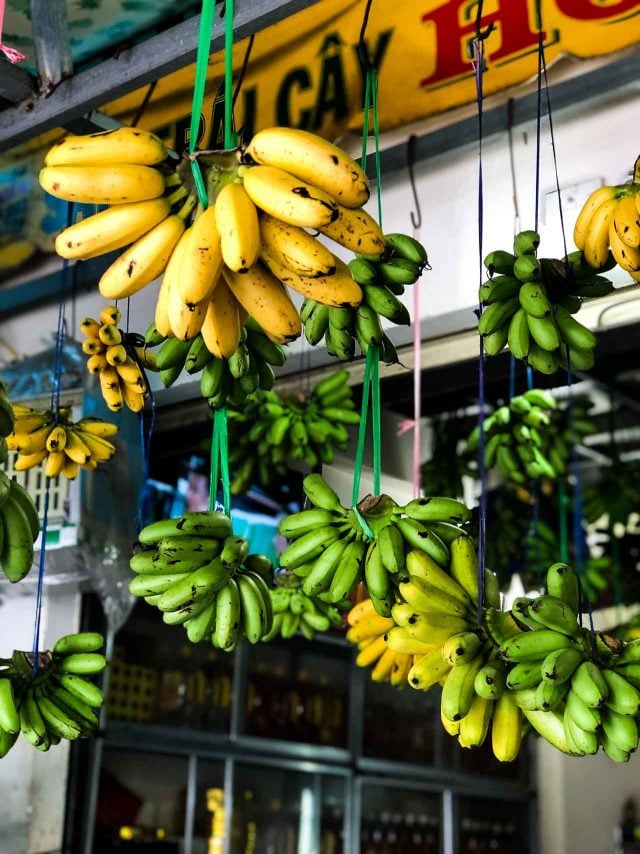
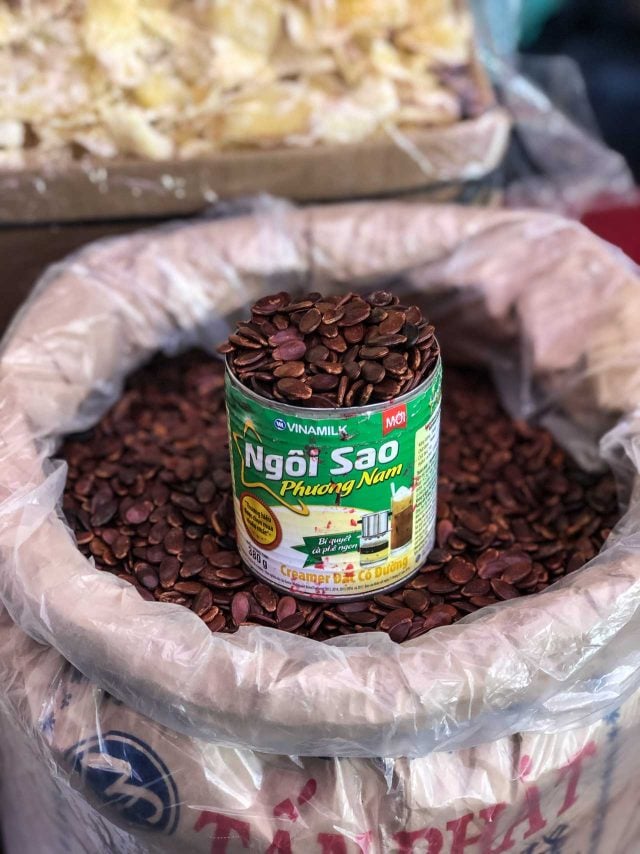
The market is pretty much an all-out assault of foods, spices, people, stuff, cookware, raw meat, kids, hats, seafood, fabric, jewelry, eyeglasses, bins of rice, tropical fruits, and more. Once you’re inside, you’ve pretty much go to go all-in. Even though the electricity seemed to be off in the market, we surged forward with everyone. If you stand still, within seconds, someone will slide past, through the narrow aisles with tables heaped with stuff on either side of you, and while it wasn’t at all dangerous, it’d be pretty easy to lose a billfold if you weren’t mindful of it.
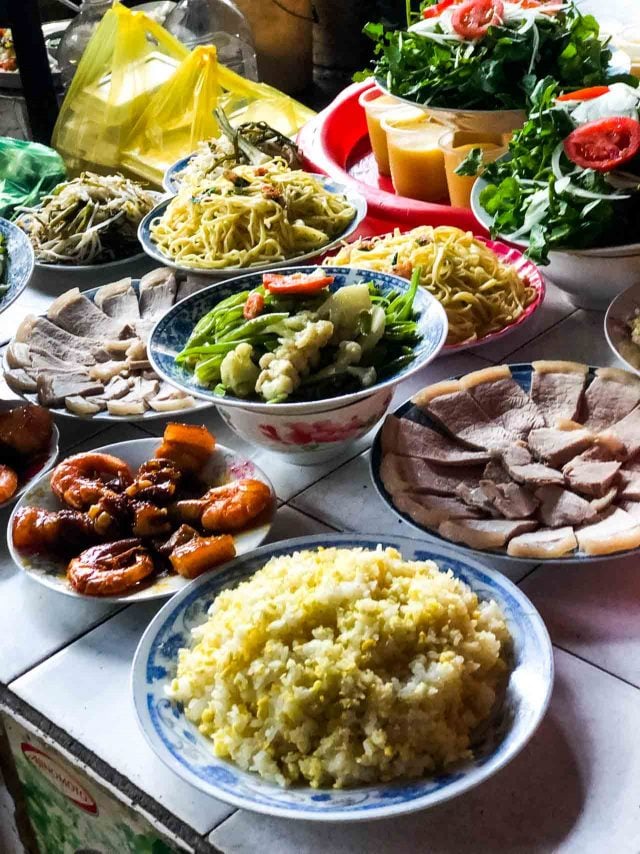
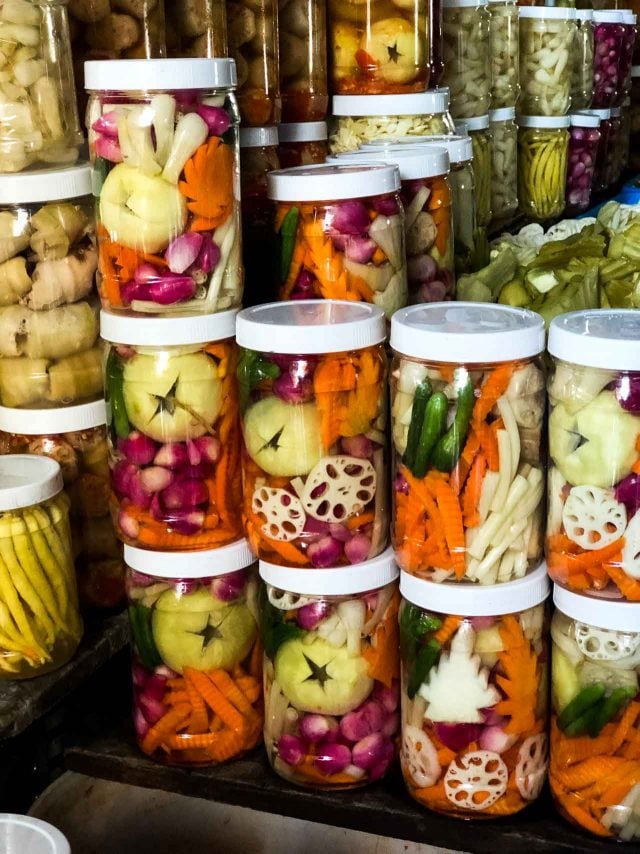
Some people have said that the sellers were very aggressive here, although we didn’t find that to be too much of the case. Like other markets in Vietnam (except for the ones we went to in Ho Chi Minh City, if you stopped to look at anything, or even glance at it, the vendor will do their best to engage you and negotiate a price, even if you don’t really want it. It’s not my preferred way to shop, but that’s the way it’s done. Which was probably better for me anyway, as I didn’t have as so much to lug home. Although those colorful jars of pickled vegetables were certainly tempting!

We did track down the well-known Bun bo Hue (beef soup) stand, which is in the “street food” section of the market. (There’s a story about how to find it here.) We were a little underwhelmed, as the people next to us seemed to be. Maybe it was an off day, but if you look at the Bun bo Hue we had later that evening, two pics down, I’ll let you decide which soup looks better to you.
If you do go to the market in Hue, I would hire a guide, or take a tour of the market with someone who knows it well. It’s pretty overwhelming and there’s a lot of see, and taste, which isn’t so easy to do on your own. It’s definitely one of the great markets I’ve been to in the world, and worth exploring. But there was so much I wanted to know more about, it would have been nice to have someone navigate for us, and explain what things were, like these orange fruits (or vegetables?)

We ate well that night at Tai Phu where the Bun bo Hue (below) was more to my liking.

We also had some good Banh cuon (rice paper rolls) at Tai Phu, and Romain liked his Bun thit (vermicelli noodles with chicken) but the dish of the house seemed to be the pork skewers (nem lui), which came in a plentiful portion with green mango slices, noodles, and herbs, to roll in rice paper.
[A reader who lives in Hue was kind enough to chime in with some local spots for Bun bo Hue – thanks smallhue! – suggesting Bún Cam at 45 Le Loi and Bún Mụ Roi at 14 Nguyen Che Dieu, that she advised getting to before 8am for the best selection of “options,” as she called them. Our hotel had breakfast on a dock under a thatched roof, with unlimited Vietnamese coffees, so I wasn’t leaving there.]

If you eat at Tai Phu, be sure to arrive in the area early and walk around the streets, where an open-air market takes place. It’s pretty laid back, and like all the markets in Vietnam, you want to cry at how beautiful all the fruits and vegetables are, stacked, lined, and piled up. I think it’s called the Ben Ngu market.

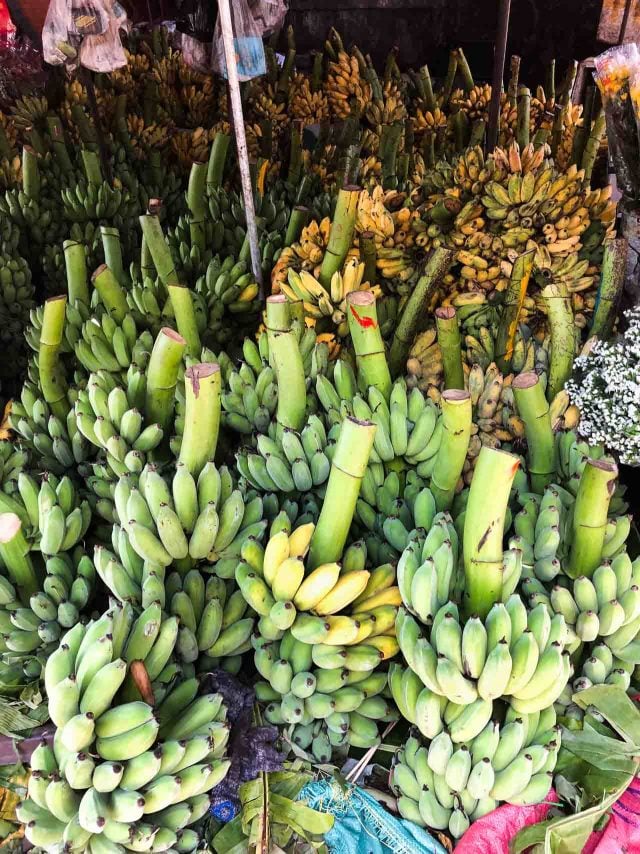


The most beautiful meal we had in Vietnam was at a place whose name I forgot (I know…right?) It had a little open-air area within the restaurant, and from the outside, you’d never know such a charming place existed. When I remember the name, I’ll update the post.

However beautiful the meal was, it was a challenge to eat. Absolutely no offense to the restaurant, but the flavors were very, very strong, and hard to describe. I think, like Vegemite, natto, and blue cheese, some things don’t translate outside their culture. I can’t describe it but I felt bad leaving most of it behind. I also wasn’t feeling so great that day, so it was hard to power through a meal of distinctive flavors. But I will say, the others in the restaurant were eating everything and enjoying it, so it was definitely our tastes, and didn’t reflect on the quality (and the beauty) of the food.
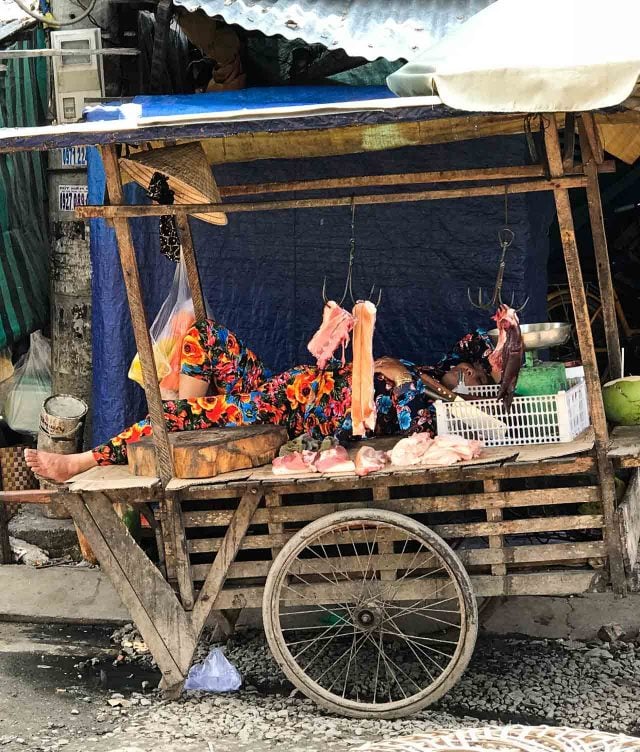

We liked eating at HANH, in Hue, the night we arrived, which was recommended by a woman at our hotel. We started with tiny bowls holding steamed rice cakes with fresh shrimp and bits of crunchy pork rinds, which you pry from the bowls with a spoon and eat with fish sauce. I ordered a bottle of what was called “local rice wine” in English on the menu, and out came a 500ml (2 cup) bottle of “Men vodka.”
When I posted a picture on Instagram, one reader noted it was “just awful stuff” and another said, “terrible…unpleasant.” I asked the server if I could exchange it for shochu, which was so strong, I think I lost a few layers of enamel on my teeth trying to, and a couple of layers of my stomach lining, as I didn’t want to be impolite and leave a lot behind. I drank what I could, then chalked it up to a “lesson learned”! Perhaps the kitchen staff enjoyed the rest after their shift.


After returning to Ho Chi Minh City, we didn’t get to go back to Spice, which we really like the first night of our arrival, because it was Tet (New Year’s), which most of the city shuts down, including restaurants.

But we did eat at Quan Bui Garden (in District 2), where you can also buy beautiful contemporary Vietnamese pottery (I brought six plates back), and Restaurant 13, where we liked the beef and onions cooked in vinegar, which you wrap in rice paper rolls at the table, as well as the little crisp rice cakes, with shrimp and scallions, known as Banh Khot (above), which you wrap in leaves and eat.

At Com Nieu Sai Gon there were several families there celebrating Tet, and having a good time. We had jellied pork, crispy fish on rice (above), Caramelized clay Pot pork, and grilled prawns. (The menu had “fake dog meat” on it, which we didn’t order.) We kept hearing plates shatter, while people cheered, and weren’t sure what was happening. But the restaurant bakes rice until a crisp coating forms on the bottoms in small earthenware bowls. The rice is “presented” by smashing the bowl. It’s called Com Dap, and here’s a video of it:
I also met up with pals Marge Perry and David Bonom, who just happened to also be traveling through Vietnam at the same time, for Banh Mi sandwiches from Banh Mie Huynh Hoa, eating them at a local beer garden, whose men’s room was definitely rated R (or maybe X, depending on your sensibilities). I did take photos but worried that they would violate Instagram’s guidelines (and trust me, even after a few decades of living in San Francisco, I thought nothing would shock me), so didn’t publish them anywhere. But David and I are still recovering from it, and even Marge, who I insisted go into the men’s room for a look.

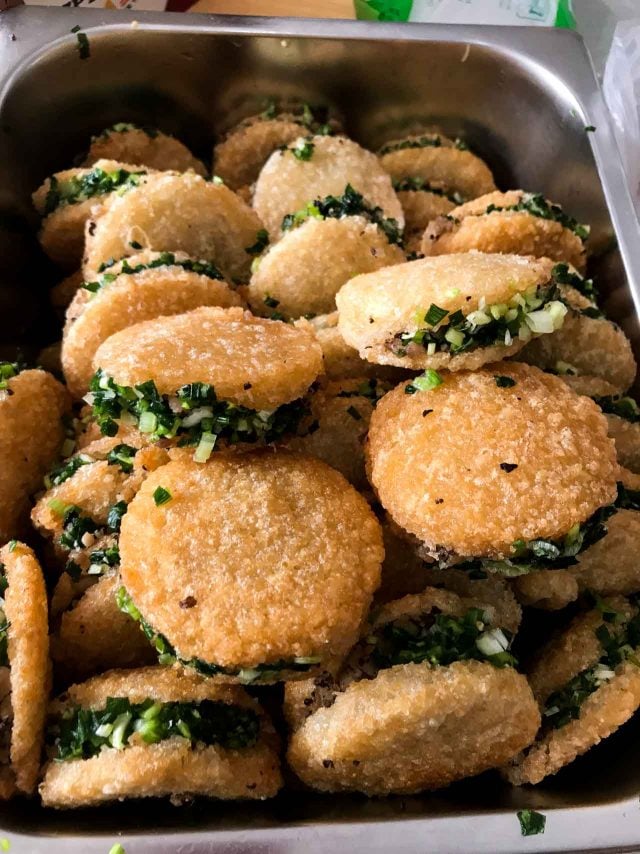
But I don’t want to leave you on that note, as Vietnam was wonderful. Some readers asked me how it was to travel through the country and I thought it was pretty great. On the whole, it was fairly easy to travel there and people were friendly and helpful. The food was very good, it’s not expensive, and the country is small enough so that you can visit several places if you’re there for ten days or so. It’s a country that’s in transition (they’ve gone through a lot), and has some challenges, but it was one of the most exciting places I’ve ever visited and next year, we’re planning to go back.


Here are some tips and suggestions for traveling in Vietnam:
1. Change money when you can. It’s not as easy to change money in Vietnam as it is elsewhere. While there are banks, locals don’t use them, instead preferring to change money elsewhere, if they can. Citibank and HSBC have ATMs which work with western credit cards; some local bank machines don’t work with U.S.-based cards. Citibank and HSBC ATMs are not everywhere, though, so use them when you find them.
Many places take credit cards in Vietnam, but some places don’t. Taxis have credit card machines but over half the time, the driver told me they weren’t functioning. (One held up a broken wire, to show me.) So have cash available. Also be sure to call your bank before you go, to let them know you’ll be traveling in Vietnam.
2. Carry tissues or napkins. Some restaurants supply them, others have very small squares of wispy-thin paper to use, and others give you a pre-moistened towelette. The food can be saucy (and restrooms don’t always have towels or tissues) so I was glad I have little tissue packets on hand. You should also carry toilet tissue as restrooms don’t always have it.
3. Drink a lot of (bottled) water. The tap water should not be consumed and it’s easy to get dehydrated due to the heat. I was felled for a day with a mild fever, which maybe was attributed to not getting enough water. (Or perhaps something I ate.) While there are drugstores in Vietnam, they are more like counters with a pharmacist and pills are sold individually. Although we didn’t need them, some travelers find they need Immodium or a similar product, which traveling, so I recommend bringing a box along rather than trying to find a box when you’re desperate.
Similarly, you can get sunscreen in Vietnam, but it’s not as widely available as it may be at home. I recommend bringing a bottle or two, especially if you’re planning any beach time.
4. When eating out, especially at the markets or street food stalls, go to places that are crowded with locals. They won’t return to places that don’t have good hygiene. Use common sense when eating at stalls; look at how clean the surrounding area is, how the food is kept, how the food is prepared, and even the condition of the tables, chairs, and dining area. As someone who’s worked in a number of restaurant kitchens, a messy, disorganized place is not the sign of a diligent cook or owner.
At Pho places on the street, I buried the herbs in the hot soup if I thought they may have been washed with non-filtered water. If you’re unsure about the chopsticks, leave them in the boiling-hot soup a short while before using them. The Vietnamese enjoy cold drinks with ice and I drank plenty of drinks with ice, and didn’t have any issues. Most ice is purchased and made with filtered water. But if you have any doubts, skip the ice.
5. If taking a cab, always take a cab with a meter. Our friends who live there said that Vinisun and Mailinh (the green cabs) are two that have meters in them, and I always looked for one of those cabs. In our experience, it’s better to let them use the meter than agree on a fixed fare in advance. (The one time I did that, the ride was 30% more than the metered fare.) Taxis are very inexpensive and the fare from Ho Chi Minh City to or from the airport was around 150,000 VND ($7).
At places like airports, you’ll find nicely dressed guys with badges who will “guide” you from the cab line to a taxi, then tell you what the fare is. Those guys work for specific cab companies and I found it better to ignore them (in spite of their repeated, and sometimes relentless, pleadings…) and just get in a cab that has a meter.
6. Snap is an Uber-like service that works the same way, via an app, which you can download before you go, but you’ll have to enter your credit card information while you’re in Vietnam. The service works like Uber. Note that you can order a car, or ride on the back of a scooter. (They provide a helmet for you if you choose the scooter option.) I used them a couple of times, including when we were swarmed by very aggressive cab drivers going into a museum (one even followed me around the museum), so I had a Snap driver meet me on the way out, and took his phone number down for future rides.


7. The currency conversion is a little complicated, at least to my non-mathematical brain. At the time of this writing, $1 = 23,000 Vietnamese Dong. There are no coins in Vietnam (yay!), but it’s easy to get confused. (And note that prices on menus and in shops will often be listed as just “230” when the price is 230,000.) I used AppBox Pro for currency conversions.
8. While it’s nice to learn the local language, Vietnamese is a challenge. I’m going to take some basic lessons next time I go, but Google translate was very helpful when I wanted specific information and couldn’t communicate. Some people do speak English, but most cab drivers (etc) don’t, so take a screenshot of an address or write it down (or have someone write it down for you), which helps, especially directions to the hotel. (Note that hotels that have names in English often have a different name in Vietnamese. Ask your hotel in advance to send you that information and print it out to bring with you, for the driver.) I often shared a screenshot with a cab driver of my destination on Google Maps, which they easily understood, too. Restaurants often have menus with pictures, which helps when ordering.
9. People in Vietnam were quite friendly. I only got scolded once for taking a pic and most people were fine with it. When in doubt, ask first, but most people were surprised that I even asked, a few even posing.
10. SIM cards are super cheap – and my internet was at least four times faster than it is in Paris. (I wanted to bring it back with me!) If you have an unlocked phone, you can pick up a SIM card for a pittance and have internet access while you’re traveling. I got a SIM card at Mobifone and I think I paid the equivalent of $10 for an enormous amount of data. I went to one of their offices and the clerk was super-helpful and she took care of everything, making sure it worked on my phone before I left. Be sure to have a copy of your passport when purchasing a SIM card. (If you go to a currency conversion place, they’ll want to see it, too.)
11. If you travel within the country you’ll likely take VietJet. (The other option are long-distance buses.) Airfares are reasonable but note that they have a very, very restrictive carry-on allowance of only 7kg and if you go over, the supplement is $100. You can buy tickets that have more generous luggage allowance, but our friends who bought our tickets bought the least-expensive, which are how most Vietnamese people seem to fly (carry on only). Every flight we took that left in the afternoon or early evening was delayed for a couple of hours, so don’t schedule things too tight. We also weren’t able to check in online for any of our flights, but the process at the airport isn’t too difficult and the staff at the airports were pretty efficient.
12. As for what to wear, I recommend dark-colored clothes as the food is a bit messy to eat, especially the soups. I ended up wearing the one dark, short sleeve linen shirt I’d brought most of the time, which was perfect, and I was miffed at myself for bringing light-colored items. It’s normal to wear sandals in Vietnam so bring a pair or two that are already broken in. Many people wear simple, non-fancy rubber sandals, which you can purchase inexpensively in Vietnam. I wasn’t anywhere where I needed to wear shoes, and once I took mine off, I didn’t put them back on until we headed to the airport for the plane home.
Depending on where you’re going, and when, you might want to pack a light sweater and a rain jacket. We only needed summer-weight clothes, but other places get chillier, depending on the latitude and season. Check the local forecast and pack accordingly. Unless you’re going to a formal event, you shouldn’t need any dressy clothes. If you plan to visit religious sites, such as temples and pagodas, men are expected to wear long pants and no tank tops; women should have something to cover bare shoulders, and you may not be admitted to certain places if wearing a short skirt or wear something with a low neckline.
13. If you want to ride a scooter, technically you are supposed to have a Vietnamese driver’s license. Some say that you can use an international driver’s license, but my friends who live there (who have Vietnamese ones) said that wasn’t the case. I rode on the back of my friend’s scooter for two weeks and it was a great way to get around. Some hotel rent bikes and scooters and I would use them, as they’re more familiar with the rules.
14. If you’re interested in cooking Vietnamese food, Andrea Nguyen’s cookbooks are great sources of recipes for Vietnamese dishes. This write-up of 25 Must-Eat Dishes in Saigon is helpful for identifying certain dishes, and where to find them in Ho Chi Minh City and these articles on best Hoi An restaurants and street food have some enticing addresses, too.
15. Lastly, to go to Vietnam, if you are traveling with an American passport, you’ll need a visa. If you search online, you’ll find a lot of websites which are fake visa processing centers. We used Vietnam Visa Center, which was recommended by Lonely Planet, and it worked well. (A friend who goes to Vietnam regularly uses this company.) We paid the extra small fee to have “fast track” service, and have someone meet us upon our arrival at the airport, and take us through.
For more on my trip to Vietnam, check out my Instagram Stories from Vietnam archived Here and Here, with videos and geo-tagged addresses.
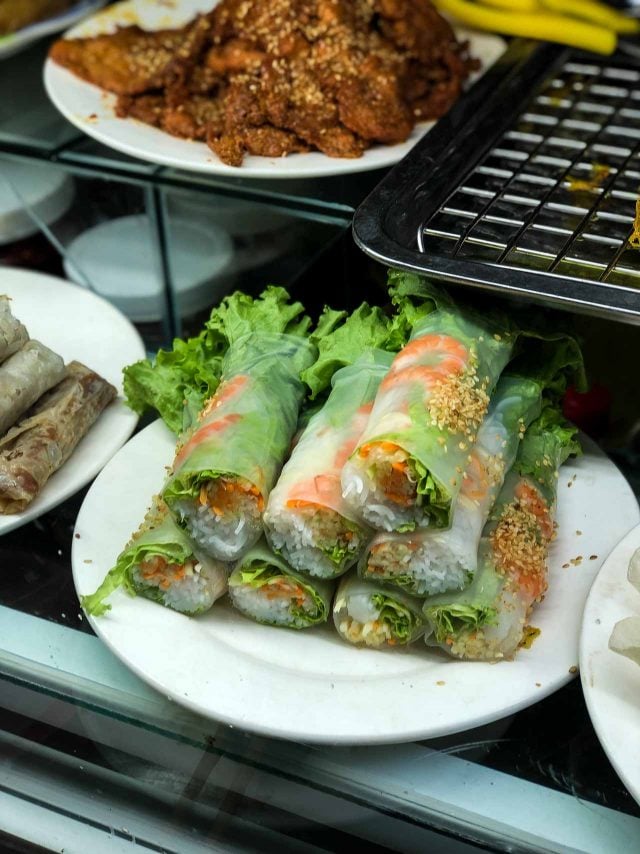

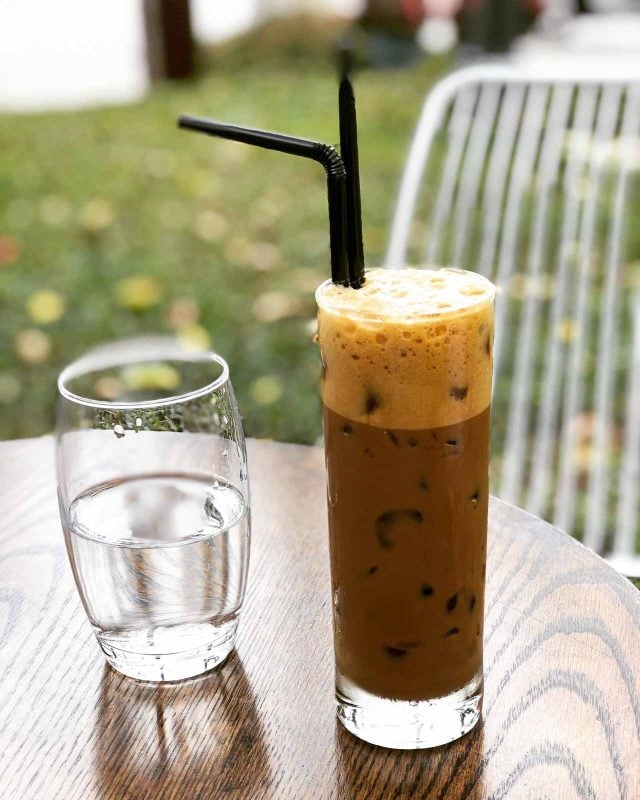
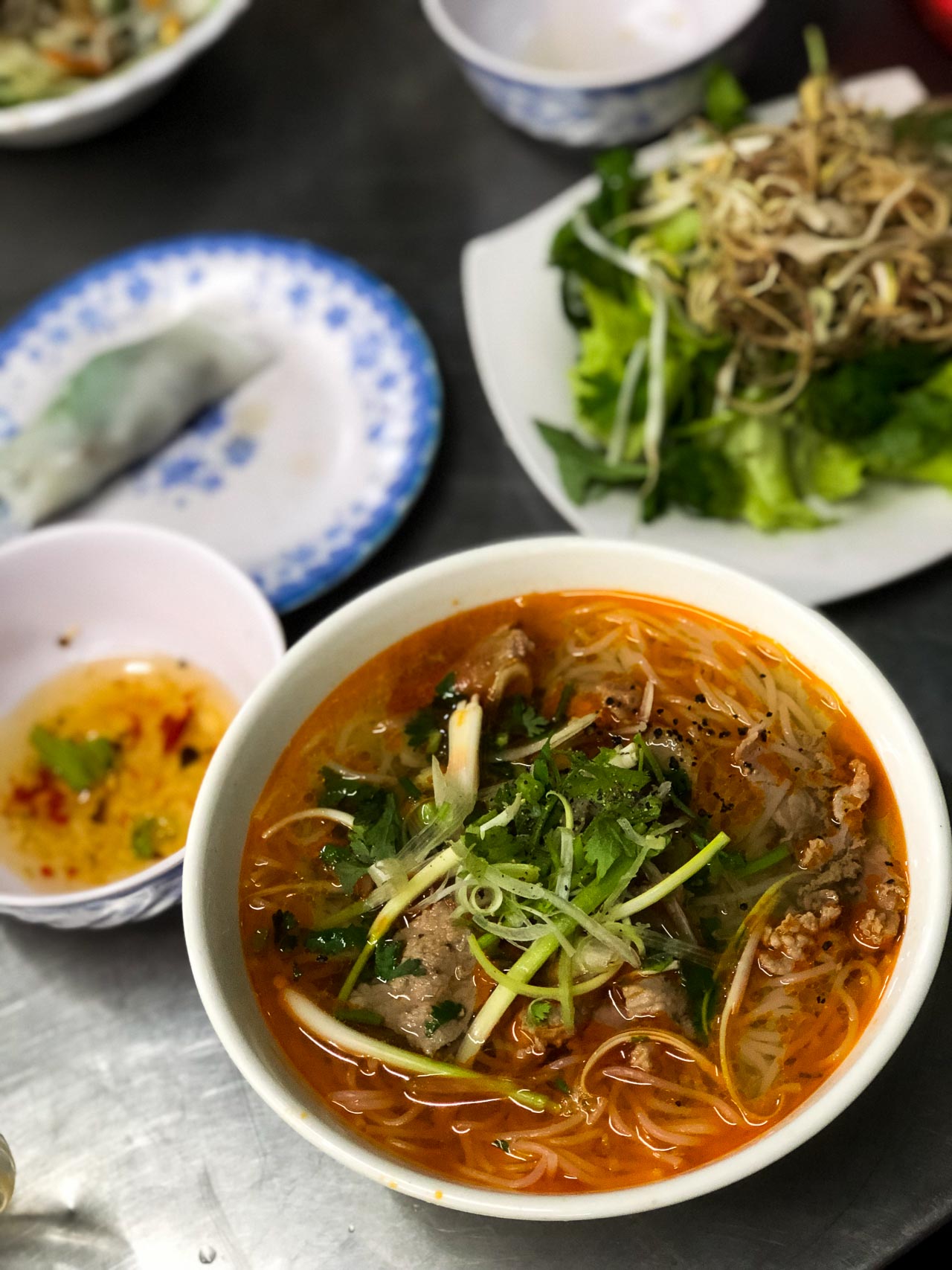

0 comments